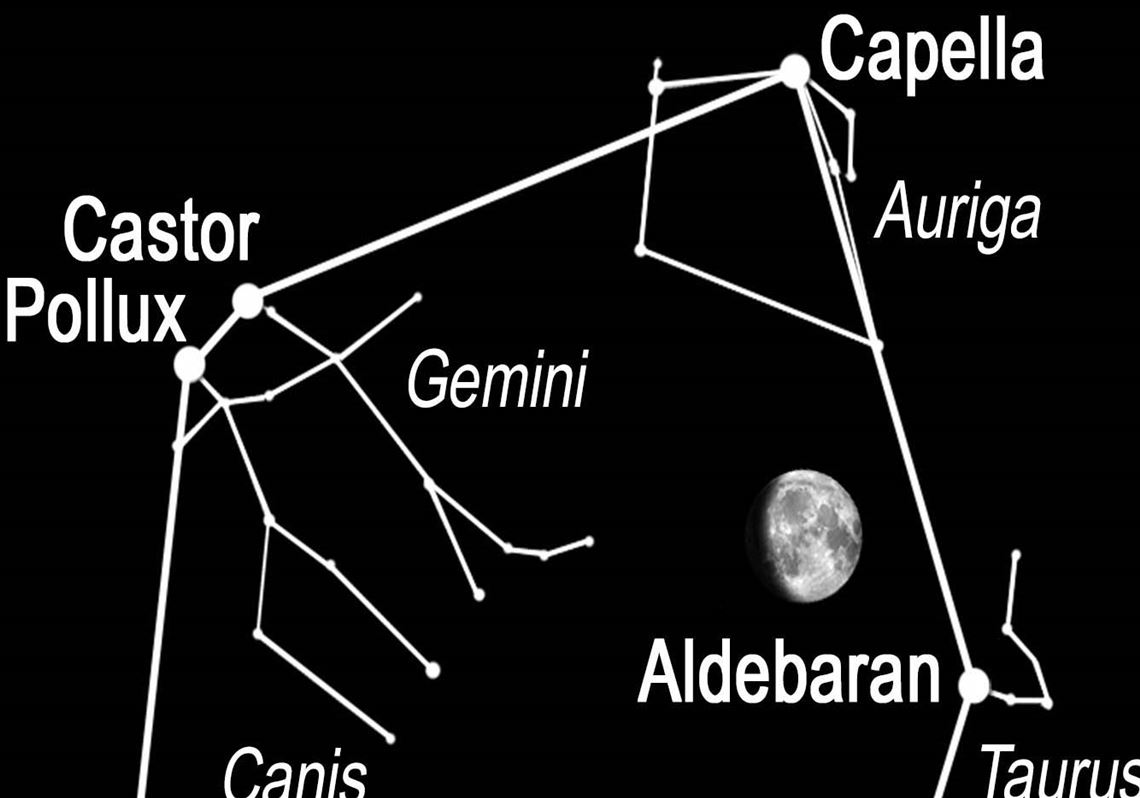The Winter Hexagon, a Northern Hemisphere asterism, is high overhead through February. It directs us to six easy-to-find constellations: Orion the Hunter; his two hunting dogs, Ursa Major and Ursa Minor; Gemini the twins; Auriga the Charioteer; and Taurus the Bull.
The stars that connect the Winter Hexagon are Rigel, Sirius, Procyon, Pollux (with nearby Castor), Capella and the red giant star, Aldebaran. The Winter Hexagon remains viewable through early March, whether or not Punxsutawney Phil sees his shadow.
The brightest star in the constellation Orion, Rigel — the Hunter’s right kneecap — leads the way. Head east or draw a line down from Orion’s belt to the brightest star in our night sky, Sirius, the nose of the Big Dog. Use the stars of Orion’s shoulders to chart a course northeast to Procyon, one of the two stars of the Little Dog.
Then up from the popular red giant star Betelgeuse, Orion’s left shoulder, find Castor and Pollux, the heads of Gemini the twins. Pollux will send you directly west to the brightest star in the pentagon of Auriga the Charioteer, Capella. Travel to Aldebaran by way of Orion’s belt as you draw a diagonal line northwest, trekking up to the red eye of Taurus the Bull.
Your return to Rigel completes the Winter Hexagon journey.
First Published: February 2, 2021, 12:00 p.m.















